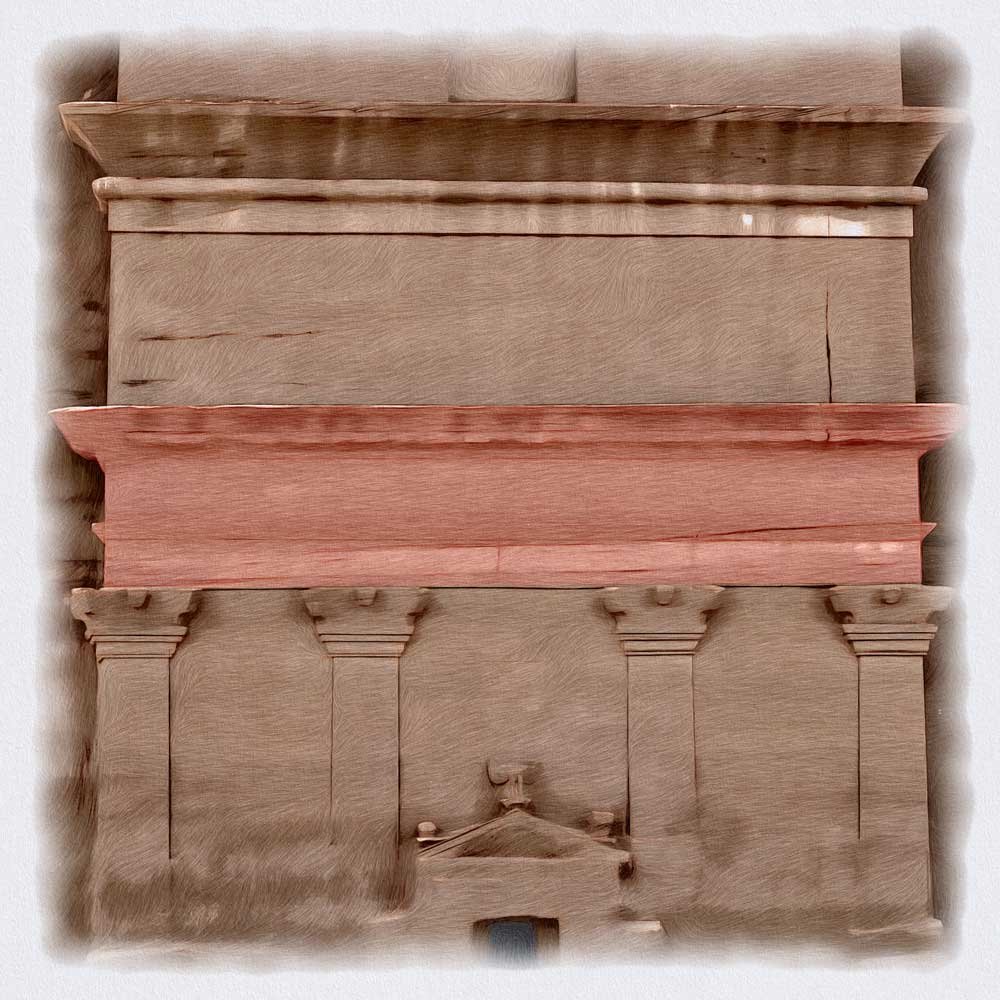In the context of a Nabataean tomb, the Greco-Roman entablature refers to the horizontal architectural structure supported by columns, influenced by classical Greek and Roman styles. This entablature is typically divided into three main parts:
- Architrave: The lowest section, which rests directly on the capitals of the columns. In Nabataean tombs, the architrave may feature plain or elaborately carved designs.
- Frieze: The middle section, often decorated with continuous sculptural reliefs or ornamental motifs. In the Nabataean adaptation, the frieze might include a blend of Greco-Roman elements with local artistic influences, such as geometric patterns or symbolic imagery.
- Cornice: The uppermost section, projecting outward and frequently adorned with decorative moldings. The cornice in Nabataean tombs reflects Greco-Roman styles but can also incorporate unique features like stylized floral patterns or other local design elements.
The Greco-Roman entablature in Nabataean tombs exemplifies the cultural syncretism of the Nabataeans, who integrated classical architectural styles with their indigenous traditions. This fusion is evident in the detailed craftsmanship and the ornamental richness of the tombs, enhancing their visual and symbolic impact.

